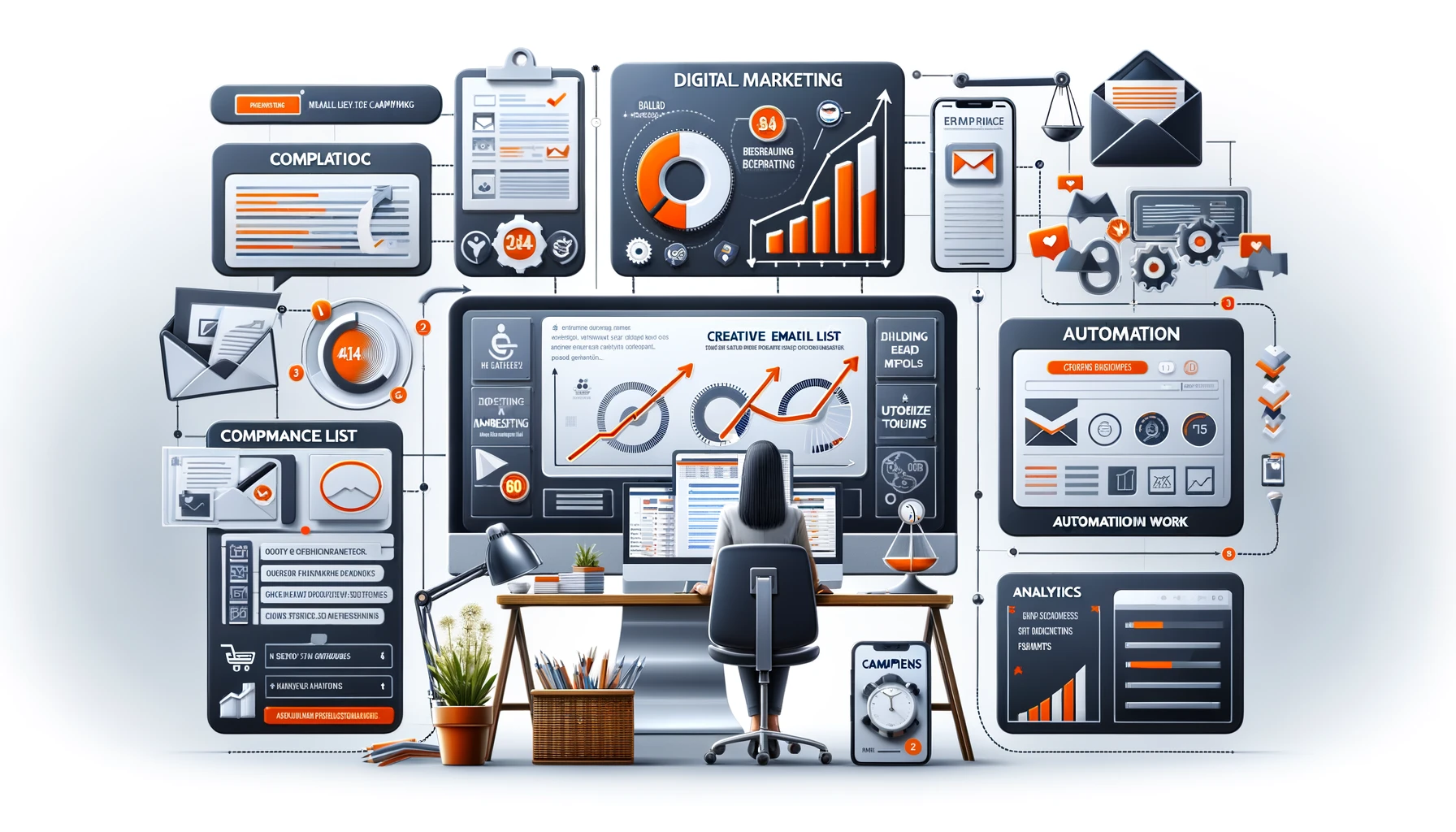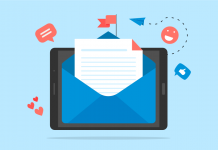Email Marketing Best Practices to Build, Automate, and Optimize Your Campaigns
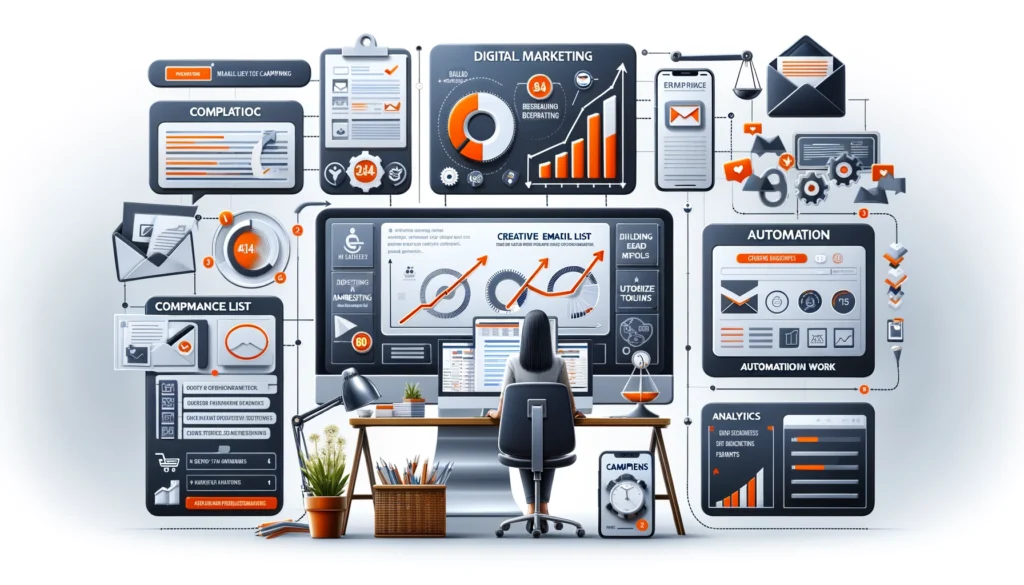
Email marketing continues to be an indispensable tool in the digital marketer’s arsenal, offering unmatched potential for engagement and conversion. This article dives deep into the email marketing best practices, providing actionable email marketing strategies and tools to build and optimize your email campaigns.
We also discuss about email marketing automation, compliance, and how to build an email list fast.
Whether you’re looking to enhance your email engagement, grow your email list rapidly, or leverage cost-effective tools, the following insights will guide you through creating more dynamic and effective email marketing strategies.
1. Email Marketing Tips: Best Practices for Engagement and Conversion
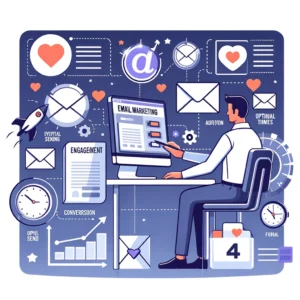
Why It Matters: Utilizing strategic tips in email marketing can transform your basic campaigns into powerful tools that significantly boost engagement and conversions.
Action Steps:
- Personalize Your Emails: Addressing recipients by name and customizing content based on their interests can significantly increase engagement. Include personalized suggestions or products based on past behaviors to make your emails feel more relevant and engaging.
- Optimize Send Times: Data-driven insights can help you determine the best times to send emails when your audience is most likely to engage. Experiment with different times and days to find what works best for your specific audience.
- Segment Your Audience: Divide your email list into segments based on demographics, purchase history, or engagement levels to tailor messages more specifically, which can lead to higher open and click-through rates.
Tool Suggestions:
Mailchimp is renowned for its robust analytics and segmentation capabilities that help tailor and schedule email campaigns effectively.
Additionally, tools like Sendinblue offer similar features with options to automate sending times based on user behavior.
2. Choosing the Right Email Marketing Platform
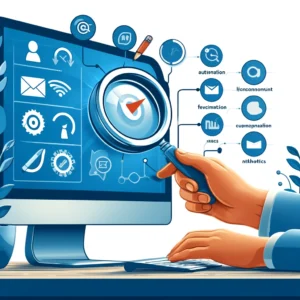
Why It Matters: Selecting an effective email marketing platform is crucial for handling extensive email lists and campaigns. These platforms provide essential tools for automation, analytics, and segmentation, enhancing both the efficiency and effectiveness of your campaigns. Without a doubt, this one’s probably the most crucial of the email marketing strategies that one can apply.
Action Steps:
- Evaluate platforms like ConvertKit, Mailchimp, and Moosend based on their automation capabilities, user interface, and integration options.
- Consider platforms known for their ease of use and comprehensive features, such as ConvertKit or Mailchimp (Automate your work today | Zapier).
Cost-Effective Email Marketing Tools
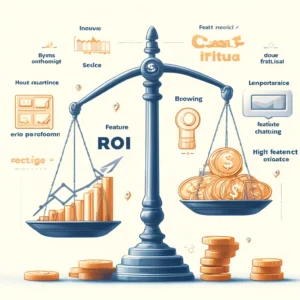
Why It Matters: Investing in cost-effective tools is crucial for maximizing the ROI of email marketing campaigns without straining your marketing budget.
Action Steps:
- Evaluate Pricing vs. Features: Assess which features are essential for your campaigns and compare them across different platforms. Look for tools that offer the best combination of usability, robust features, and affordability.
- Consider Scalability: Opt for tools that can scale with your business. This means not only should the tool handle increasing volumes of emails as your list grows, but it should also continuously update with new features and integrations that you may need in the future.
- Explore Integrations: Ensure that the email marketing tool integrates seamlessly with other tools you use, such as CRM software or analytics tools, to streamline your workflow and data management.
Tool Suggestions:
Moosend is known for its affordability and rich feature set, which includes advanced segmentation, automation, and analytics, making it ideal for small to medium-sized businesses looking to grow.
Another great option is MailerLite, which offers a balance between cost and functionality, especially for those just starting out.
3. Ensuring Email Marketing Compliance
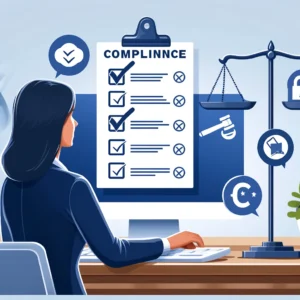
Why It Matters: Adhering to email marketing laws such as GDPR and CAN-SPAM is essential to avoid penalties and build trust with your subscribers.
Action Steps:
- Include clear options for unsubscribing and transparent policies on data usage.
- Ensure explicit consent is obtained from subscribers before sending communications.
- Consider using tools like Mailjet which provide features that help manage compliance effectively (Drip).
4. Maintaining a Clean Email List
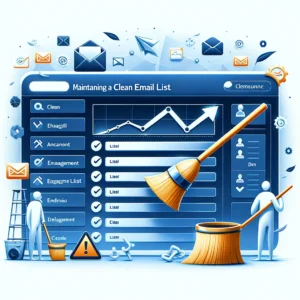
Why It Matters: A clean and well-maintained email list ensures higher engagement rates and maintains your sender reputation by reducing bounce rates and spam complaints. This is one of the most important email marketing best practices that’s often overlooked by many, but it can directly affect your ROI!
Action Steps:
- Implement a double opt-in process to confirm subscriber emails, ensuring a high-quality list.
- Regularly cleanse your list of inactive or unresponsive subscribers using tools like Mailgun Optimize.
- Utilize Shopify Email for effective list management and integration of double opt-in systems (Shopify).
Bonus: Building and Growing Your Email List Fast

Why It Matters: A robust and actively engaged email list is one of the most valuable assets in digital marketing, providing a direct line to your audience.
Action Steps:
- Utilize Lead Magnets: Compelling lead magnets such as ebooks, cheat sheets, or exclusive videos can attract subscribers. Ensure that these resources solve a real problem or answer questions your potential customers might have.
- Promote Sign-Ups Across Channels: Leverage every part of your online presence to promote email sign-ups. Add sign-up forms on your blog, website, and social media pages. Use engaging calls-to-action that communicate the value of subscribing, such as exclusive offers or first access to new products.
- Host Webinars or Live Events: These can be particularly effective for gathering email addresses, as they provide value in exchange for contact information. Make sure the content of the webinar is compelling enough to justify the exchange.
Tool Suggestions:
ConvertKit excels in providing easy integration with websites and social media for capturing email leads. Its user-friendly interface makes it ideal for creators and small businesses to manage their subscriber lists efficiently.
5. Creating Engaging Email Content

Why It Matters: The content of your emails significantly impacts engagement and conversion rates.
Action Steps:
- Develop a content strategy that includes personalized messages, user-generated content, and interactive elements such as polls and videos to boost interaction.
- Design visually appealing emails with tools like Canva and incorporate interactive components with Mailmodo (Adobe Business).
Also, here’s a review of a helpful product: Email Ramp Review and Bonuses (opens in new tab)
6. Optimizing Emails for Mobile and Dark Mode

Why It Matters: With a significant volume of emails opened on mobile devices, optimization for mobile and dark mode is essential to ensure your emails are accessible and visually appealing across all devices. Action Steps:
- Design your emails using responsive templates that adjust to various screen sizes.
- Test your emails in both light and dark modes to guarantee readability across all user preferences.
- Utilize Email on Acid for comprehensive testing and optimization of email campaigns (Mailjet).
7. Email Marketing Automation: Automating Email Campaigns
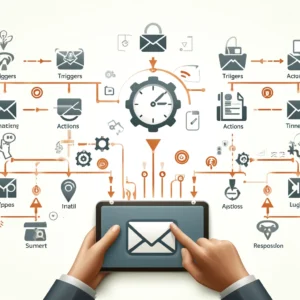
Why It Matters: Automation allows for personalized communication and efficient campaign management, saving time and enhancing user engagement.
Action Steps:
- Set up automated email sequences for welcome emails, cart abandonment, and customer re-engagement.
- Use dynamic templates that adapt to customer behaviors and preferences.
- Explore HubSpot for its robust automation features that streamline email processes (business.com).
8. Measuring Success and Optimizing Strategies

Why It Matters: Regular assessment of campaign performance is critical to understand effectiveness and guide future email marketing strategies.
Action Steps:
- Track key performance indicators like open rates, click-through rates, and conversion rates.
- Employ A/B testing to refine email elements such as subject lines and content structure.
- Leverage integrated analytics tools in platforms like Mailchimp and HubSpot to gain deeper insights and optimize campaigns (Adobe Business) (business.com).
Cementing Your Email Marketing Success
To sum up, mastering email marketing involves a combination of strategic planning, insightful implementation, and ongoing optimization.
By personalizing your communications, choosing the right tools, and adhering to best practices, you can significantly enhance the effectiveness of your email campaigns.
Remember, the key to email marketing success lies in continuously adapting to the evolving digital landscape and the preferences of your audience. Keep testing different email marketing strategies, stay compliant with regulations, and always aim to deliver value to your subscribers.
By doing so, you will not only meet your marketing objectives but also build lasting relationships with your customers.
Through thoughtful application of the email marketing best practices discussed above, from segmenting your audience to ensuring each campaign is optimized for mobile devices, you are well on your way to leveraging email marketing as a powerful tool to grow your business.
As you implement these tips and tools, you’ll find that email marketing is not just about sending emails, but about creating a meaningful dialogue with your audience.
Frequently Asked Questions:
1. What are the best practices for email marketing?
The best practices for email marketing include building a strong subscriber list, personalizing your emails, and ensuring mobile optimization. Other key practices are segmenting your audience, using A/B testing, and maintaining a clean email list by removing inactive subscribers. Learn more about email marketing best practices
2. How can I improve my email open rates?
Improving email open rates involves writing compelling subject lines, optimizing the email preview text, and sending emails at the right times. Personalizing your emails and avoiding the use of “no-reply” addresses can also increase open rates. Explore tips to improve email open rates
3. Why is email list segmentation important?
Email list segmentation is important because it allows you to send targeted messages to specific groups within your audience. This improves relevance and engagement, leading to higher open and click-through rates. Segmentation can be based on demographics, purchase history, or email engagement. Learn about email list segmentation
4. How do I create engaging email content?
Creating engaging email content involves personalizing your messages, keeping the content concise, and using a clear call-to-action. Incorporating visuals, such as images and videos, can also make your emails more engaging. Discover how to create engaging email content
5. What is the best time to send marketing emails?
The best time to send marketing emails varies depending on your audience. Generally, mid-week days (Tuesday through Thursday) during work hours are recommended. However, it’s best to test different times and analyze the results to determine what works best for your audience. Find the best time to send marketing emails
6. How can I ensure my emails are mobile-friendly?
To ensure your emails are mobile-friendly, use a responsive design that adjusts to different screen sizes. Keep your email width between 500 and 650 pixels, use a readable font size, and make sure your call-to-action buttons are large and easy to tap. Learn more about mobile-friendly emails
7. What are some common email marketing mistakes to avoid?
Common email marketing mistakes to avoid include using a “no-reply” email address, neglecting to segment your audience, and sending emails too frequently. Additionally, failing to optimize for mobile devices and not including a clear call-to-action can hurt your email campaign’s effectiveness.
8. How do I measure the success of my email campaigns?
Measure the success of your email campaigns by tracking key metrics such as open rates, click-through rates, conversion rates, and unsubscribe rates. Use these metrics to evaluate the effectiveness of your campaigns and make necessary adjustments. Learn how to measure email campaign success
9. How often should I clean my email list?
Regularly clean your email list to maintain high engagement rates. Removing inactive subscribers can improve open rates and reduce the risk of your emails being marked as spam. Aim to review and clean your list every three to six months.
10. Why should I avoid using ‘no-reply’ email addresses?
Using a ‘no-reply’ email address can prevent recipients from interacting with your emails, which is discouraged by CAN-SPAM regulations. Instead, use a recognizable sender name to increase trust and open rates.
11. What are some effective email personalization techniques?
Effective email personalization techniques include using the recipient’s name, tailoring content based on past interactions, and segmenting your audience. Personalization can lead to higher engagement and conversion rates.
12. Why is it important to send a welcome email?
Sending a welcome email within 24 hours of a subscriber joining your list sets the tone for future communications, introduces your brand, and establishes a connection. Welcome emails typically have higher open rates and are crucial for engaging new subscribers.
13. How can I ensure my emails comply with GDPR?
To comply with GDPR, ensure you obtain explicit consent from EU subscribers before adding them to your email list. Avoid pre-checked opt-in boxes and provide a clear option to unsubscribe. Keeping detailed records of consent can also help maintain compliance. Read more about GDPR compliance

